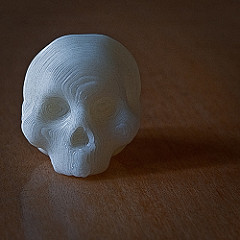You probably don’t own a 3D printer considering that a decent one costs well over a thousand dollars, but you’ve likely heard about the amazing things it can do. The excitement about the possibilities of 3D printing has been increasing in recent years as a result of the change from printing out just toys and furniture to printing out entire buildings. It might be easy to assume that the 3D structures generated from such machines would be limited to things in the realm of architecture, but in reality, 3D printed structures can serve many other purposes. For example, 3D printing can be useful for understanding complex molecules and for creating prosthetic limbs. A recent discovery will result in the addition of a new type of medical application for the 3D printing technology.
Image Source: Maciej Frolow
Researchers used 3D printers to create a nerve pathway that helps damaged nerves regenerate. The researchers carried out a 3D scan of a rat’s sciatic nerve and then used a custom 3D printer to print out a silicone guide that would aid in nerve regeneration. The guide contained biochemical cues that would stimulate the regrowth of sensory and motor nerve, both of which are required for nerves to function properly. You can view the 3D printing process that they designed in this video. The researchers then implanted the 3D printed guide into rats who suffered nerve damage that caused problems with walking. After 10-12 weeks of implantation, they observed that the rats displayed significant improvements in their abilities to walk.
The results of this study have massive implications. Nerve damage is often permanent, but if this method of printing a personalized guide for nerve regeneration is proven successful in humans, then restoring nerve function would become much simpler. Furthermore, the idea that 3D printed structures could successfully work within an organism brings about the concept of printing 3D organs. A lot of work still needs to be done in order to ensure success of this nerve regeneration guide in humans, but being able to print out fully functional organs would potentially be the next step forward following perfection of such models.
Feature Image Source: toolmarks indicate 3d printing by Tuzen










